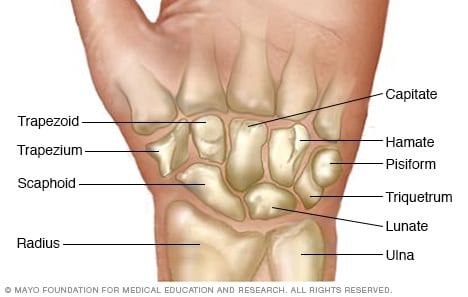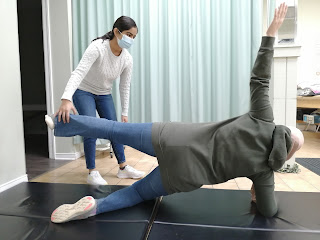Wrist pain from "loose" carpals

Wrist pain is quite common and can be caused by a lot of different factors. One common cause is from the carpal bones, which are small and very mobile to allow our wrist quite a bit of motion to accomplish our tasks. Sometimes with repetitive stress the bones might move into a position that it gets stuck and cannot return to its neutral position. That could happen especially if the wrist muscles are weak or too tight in certain directions. Lunate is the most common carpal to be pushed out of its optimal position. Other than repetitive stress, it could also happen with a fall or a car accident when the wrist is impacted in a flexed position.
When people come in to see a physiotherapist with a wrist pain, we will assessment the wrist range of motion and strength and to find out where the pain is coming from. When we determine the pain is from a loose carpal, most likely the lunate, we can often perform a quick manipulation of the carpal to bring the small bone back to its neutral position. Sometimes it takes a few minutes of repetitive mobilization of the carpal to move it back. It usually can increase the wrist bending range of motion with decreased pain right away. Along with positional change of the carpal, inflammation of the wrist can happen as well causing pain and swelling. We can use ultrasound or heat treatment to increase circulation and decrease the inflammation symptoms. Traction of the wrist and gentle mobilization of other carpals in the wrist could also help the joint fluid to move around and decrease inflammation signs and symptoms.
We usually would recommend wearing a wrist brace consistently for a few days to keep the carpal bones stable after the manipulation or mobilization so the carpals don't keep moving back and forth. Wearing a brace during activities and sleep can also reduce the inflammation and help the wrist to recover. Taking the brace off regularly to perform rehab exercises is also recommended to prevent stiffening from immobilization and helping the joint and muscles to maintain its flexibility and strength. Once the pain subsides, building stronger muscles and increasing flexibility with proper progressive strengthening and stretching exercises are very important prevent the "loose" carpal from moving out of its optimal position again.
Any rehabilitation takes time, always give your body about 6 weeks to recover. Further strength and flexibility improvement could take up to 12 weeks. Age, fitness and activity level all can play a factor on how fast your pain or muscle/joint condition improves. Don't loose your patience and always keep working!
Have you experienced a "loose" carpal? Please share your story of recovery below!



Comments
Post a Comment